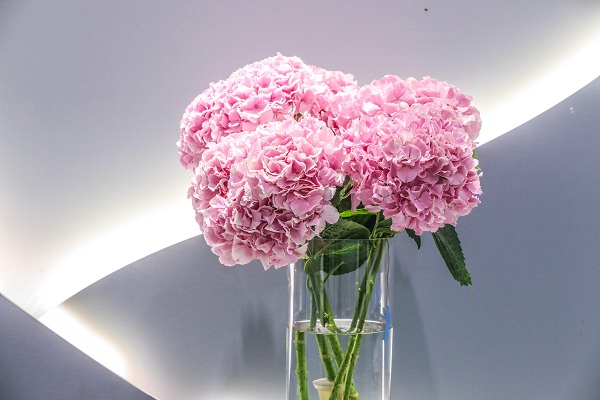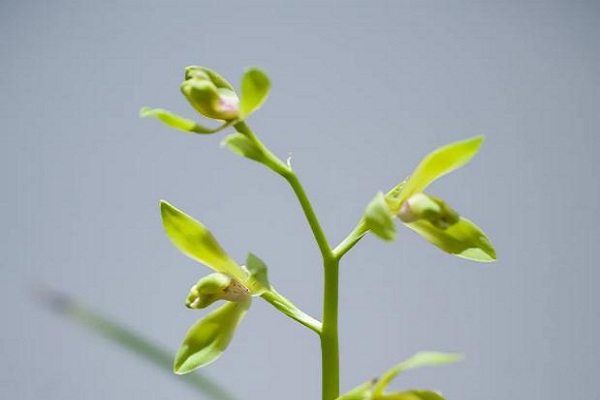The site is on the eastern bank of the Chenshan Pond, in the north of Guangfulin village and on the riverbed and two banks of Shijiaping Creek. In 1958, when people were digging the watercourse, some cultural relics in the Neolithic period were unearthed, including a black pottery zun with the patterns of spotted deer and a battle axe in the belly.
The potteries carved with two kinds of patterns were found for the first time during the archaeological excavation of Liangzhu Culture. In 1961, the archaeological department of the Shanghai Cultural Relic Management Committee made trial excavation of this historical site, opened 73m2 of area, and unearthed the stone plow, stone axe, stone knife, pottery jar, pottery basin, pottery stem bowl and other relics made more than 4,000 years ago.
The trial excavation ascertained that the area of this site is about 7,000 square meters. Near the site, people also found graves of the primitive society. The positions of skeletons and the buried items prove it was a patriarchal society.
To the west of the site, people also found two tombs in the period of Liangzhu Culture. According to textual research, the site consists of two cultural layers: Liangzhu Culture in the Neolithic Period and Wu-Yue Culture in the Spring and Autumn Period (770~476 BC), about 4000~2500 years ago.
In 1999, the Shanghai Cultural Relic Management Committee carried out the second investigation and excavation. The excavation area is 349 squ m. Large architectural components were unearthed. They found it might be the earliest town in Shanghai.
At the end of 2000, the archaeological department started the third excavation. The excavation area is 500 sq m. Category-1 cultural remains in Late Neolithic Period were discovered. It is the first time that such cultural remains were found in the region around Taihu Lake.
Their origin may be traced back to Wangyoufang category under Longshan Culture in the east of Henan and southwest of Shandong province. They also bear obvious signs of living together with local ancestors.
They should belong to the late stage of Liangzhu Culture, about 4500~4200 years ago. According to the designation principle of archaeology, they were defined as "Guangfulin Cultural Relics".
In December 2001, the archaeological department found four square pits with a side length of 5m and a 1m deep rectangular pit of about 250 sq m, and graves, stone axes, stone sickles and stone adzes were unearthed.
In March 2008, following the planning and construction in this area, rescue archaeological excavation of the Guangfulin Historical Site was initiated. Now the excavation area is above 5,000 sq m. Completed excavated units totaled 196. It is the largest open-country archaeological site in Shanghai.
From the site, a great many remains with great archaeological value have been unearthed. Among them, the incomplete brass tripods in the Eastern Zhou Dynasty (770~256 BC) were discovered for the first time in Shanghai. In the northwest of the site, five tombs which have a large interval with human bones were discovered.
The heads in the tombs face different directions, northwest, southeast, west and so on. These phenomena are obviously different from the tombs of the local Liangzhu Culture, which had strict and uniform burial customs. This fills the gap that no ancient tombs were found in Guangfulin, and have extremely important academic value.
In the west of the excavation area, the residential remains of Guangfulin were discovered. Among them, there is a road in NW-SE direction and paved with red baked soil blocks and fine pottery pieces.
The traces of use are obvious. In addition, buildings in stilt style and ground surface style as well as tens of well-preserved wooden poles and many pottery, porcelain, jade, stone, bone and wooden wares were unearthed.
In an ash pit, well-preserved rice husk, rice and other cereals were found. The remains of horns of spotted deer, pigs, tortoise shells and other animals were found. The remains discovered in the historical site of Guangfulin provide precious new materials for studying the activity range and migration of human tribes 4,200 years ago and the cultural evolution in the region around Taihu Lake.
Archaeological historians believe Songze Culture began the evolution into Liangzhu Culture about 5,400 years ago. In this period, the ancient people mastered relatively advanced paddy planting techniques and stone sickles for harvesting crops.
Pots, cups, jars, gui and other drinking vessels made of pottery increased, wine brewing was in trend, and broad bean, sesame, peanut and sweet melon were also being grown.
On the basis of the original water wells, protective wooden well curbs were added. In the aspect of pottery making, the famous Liangzhu black potteries were recognized as precious items never discovered in other archaeological excavations in the world.
Moreover, they have unified specification and regular shapes and bear obvious traces of professional production. Many jade articles unearthed from the ruins of Liangzhu Culture show a sophisticated process, fine workmanship and diverse designs.
They are almost as good as the jade articles made today. On the site of Liangzhu Culture, there is residual linen, silk pieces, silk ribbons and other textile articles. They were all finely woven, suggesting the people in the Period of Liangzhu Culture had mastered the techniques of silkworm breeding, silk reeling and weaving.
In the Period of Liangzhu Culture, much progress was made in spiritual life and statues of god commonly being worshiped by them, along with many primitive religious utensils appeared. The zun unearthed from the Guangfulin Historical Site was carved with the patterns of deer and battle axe.
They are the earliest pictures and pictographic characters in Songjiang. The historical remains and articles unearthed from the site prove they should belong to Liangzhu Culture.
In 1999, the archaeologist from Shanghai discovered category-1 new cultural remains in the Late Neolithic Period in the region around Taihu Lake, more than 4,200 years ago. Their uniqueness has some links with Liangzhu Culture and is also a product of an independent ancient culture.
They do not bear any resemblance with the remains in other categories of Neolithic cultural sites and are also different from the historical sites of the Maqiao Culture that appeared later.
After study and comparison of the characteristics of these remains, the researchers found they have clear cultural features of immigrants and are harmonious with the culture of the Yellow River and Huai River basins and the culture of the Yangtze River Basin.
On June 15, 2006, more than 50 archaeologists from home and abroad came to Songjiang and attended the Seminar on the Late Neolithic Culture in the Region around Taihu Lake and the Historical Remains in Guangfulin.
After deliberation, the experts officially named the cultural remains newly unearthed from the Guangfulin Historical Site as "Guangfulin Culture". In 2008, the excavation of the historical site of the Guangfulin Culture was rated as one of the top seven major discoveries of unearthed cultural relics of the year.
In December 1977, Guangfulin Historical Site was announced as a heritage site under the protection of Shanghai.


